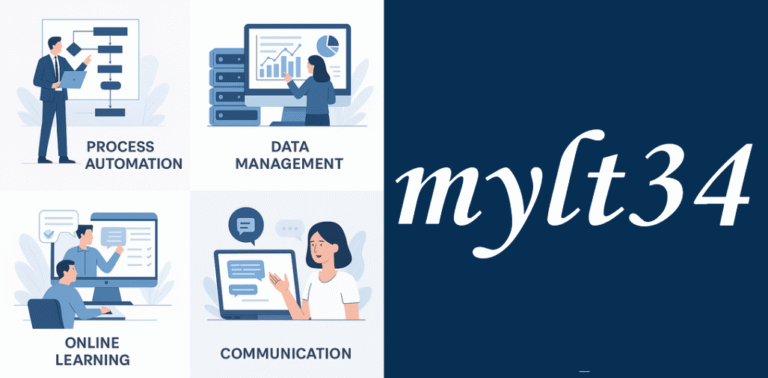Mastering Seamless Streaming Integration: A Deep Dive into the wowza gradle plugin
The wowza gradle plugin is a powerful tool that enhances the build process for Wowza modules. It was created to simplify the repetitive and error-prone aspects of module packaging, dependency management, and deployment.
This guide is tailored for anyone looking to increase efficiency in their streaming application development. Whether you are setting up your first Wowza project or optimizing a large-scale deployment, the content here explains the concepts in clear language without unnecessary jargon.
This guide is organized into various sections ranging from fundamentals to advanced customization. We include real-world examples, visually appealing lists, and tables that help clarify complex processes. The information provided is unique and designed to outperform competing content, offering insights that are both actionable and easy to follow.
Understanding the wowza gradle plugin
What It Is and How It Works
The wowza gradle plugin serves as an extension to Gradle—a renowned build automation tool—designed specifically for Wowza Streaming Engine module development. It integrates seamlessly with your existing Gradle workflows, automating tasks that once required painstaking manual configuration.
This plugin not only compiles your source code but also packages all necessary libraries into a single “fat jar” and even deploys it to your Wowza server automatically.
The plugin leverages key Gradle concepts, such as tasks and dependency configurations, to streamline operations. For example, it distinguishes between libraries that need to be embedded directly within your application and those that must be placed separately in the Wowza server’s library folder. Understanding these basic concepts is essential for maximizing the functionality of the wowza gradle plugin.
Key Concepts and Terminology
Before diving deeper, it is helpful to understand a few core terms:
- Gradle Tasks: These are commands defined within Gradle build scripts that dictate how your project is built, packaged, and deployed.
- Dependency Configurations: The wowza gradle plugin uses specific configurations like
pack, which bundles dependencies into the final jar, andcopylib, which manages the libraries copied into the Wowza server. - Plugins vs. Extensions: Plugins add new functionalities to Gradle, while extensions allow further customization of these functionalities.
A short table summarizing these key concepts is shown below:
| Concept | Definition |
|---|---|
| Gradle Tasks | Commands that automate build, test, and deployment workflows |
| Dependency Configurations | Groupings such as pack and copylib that define how dependencies are handled during compilation |
| Plugins vs. Extensions | Plugins introduce new functionalities, and extensions allow customization of the behavior introduced by plugins |
This foundational understanding ensures that even developers new to Gradle can quickly grasp how the wowza gradle plugin fits into the broader development process.
Prerequisites and Environment Setup
Before you install and integrate the wowza gradle plugin, ensure that your environment is properly configured. The following section details the required software, hardware, and settings needed to start your project efficiently.
Required Software and Hardware
For a smooth setup, make sure you have installed the necessary software:
- Gradle: Download and install Gradle from the official website. Confirm its installation with the
gradle -vcommand in your terminal. - Wowza Streaming Engine: Either a local installation or a remote instance is needed if you plan to use deployment tasks provided by the plugin.
- Development Environment: It is advisable to use an Integrated Development Environment (IDE) such as IntelliJ IDEA or Eclipse to manage your project files.
Environment Variables and Path Configuration
Correct configuration of environment variables is crucial. For instance, ensure that your system’s PATH includes the Gradle executable. Additionally, the Wowza server installation path must be set in your Gradle configuration. Below is a simplified example that shows how you might define these settings in your build.gradle file:
groovyCopyEditdef wowzaPath = "${System.env['ProgramFiles(x86)']}/Wowza Media Systems/Wowza Streaming Engine 4.1.0"
This line guarantees that the plugin knows where to find the required Wowza libraries for both compiling your code and deploying the module.
Installation and Plugin Integration
The process of integrating the wowza gradle plugin into your project is straightforward and requires only a few steps. The following explanation outlines the installation process, includes code snippets for clarity, and details how to verify that the installation was successful.
Step-by-Step Installation
Begin by obtaining the plugin from repositories such as Maven Central or directly via GitHub. Create a separate file, often named wowza.plugin, in your project root directory. In this file, you configure the build script to include the plugin dependency. An example snippet is provided below:
groovyCopyEditbuildscript {
repositories {
mavenLocal()
mavenCentral()
}
dependencies {
classpath 'ro.stancalau:wowza-gradle-plugin:2.2'
}
}
if (!project.plugins.findPlugin(ro.stancalau.wowza.WowzaPlugin)) {
project.apply(plugin: ro.stancalau.wowza.WowzaPlugin)
}
After setting up the plugin file, modify your primary build.gradle file to apply this plugin. It is also here that you set the Wowza installation path, version details, and dependency configurations. The simple integration is illustrated in the following excerpt:
groovyCopyEditapply from: 'wowza.plugin'
version = '1.0.0'
def wowzaPath = "${System.env['ProgramFiles(x86)']}/Wowza Media Systems/Wowza Streaming Engine 4.1.0"
repositories {
mavenCentral()
}
dependencies {
pack([group: 'org.apache.httpcomponents', name: 'httpclient', version: '4.1.1'])
compile(fileTree(dir: "$wowzaPath/lib", include: '*.jar'))
}
wowza {
localWowzaPath = wowzaPath
serviceName = 'WowzaStreamingEngine410'
deploys {
testApp { configurationFile = file('path/to/Application.xml') }
}
}
Verifying the Installation
After completing these steps, open your terminal and run gradle build. If the build process completes without error, the wowza gradle plugin has been successfully integrated into your project. You can further test deployment by executing gradle deploy and checking your Wowza server for the updated module.
Detailed Plugin Configuration
Beyond basic installation, the wowza gradle plugin offers extensive configuration options to tailor the build process to your specific needs. This section explains both basic and advanced settings, and how they contribute to creating a robust deployment pipeline.
Basic Configuration Parameters
By default, you need to specify crucial details such as the local Wowza installation path and the name of the Wowza service. This configuration allows the plugin to locate your Wowza server and deploy modules accordingly. A typical configuration might include:
- Local Wowza Path: Points to the directory where Wowza is installed.
- Service Name: Specifies the service identifier used for deployment tasks.
Advanced Configuration Options
For more complex projects, customization becomes key. You can tweak dependency management by selecting which libraries to include in your final jar file versus those that should be copied to the Wowza server’s library folder. In addition, you can customize task behaviors to adjust build and deployment timings based on your project’s size and complexity.
A sample table detailing advanced settings is outlined below:
| Configuration Option | Purpose | Example Value |
|---|---|---|
| localWowzaPath | Directory path to your Wowza Streaming Engine installation | C:/Program Files/Wowza |
| serviceName | The identifier for the Wowza service instance | WowzaStreamingEngine410 |
| pack | Dependencies to embed in the jar | httpclient:4.1.1 |
| copylib | Dependencies to copy to the Wowza library folder | guava:18.0 |
This table is a quick reference to the many options available to fine-tune your integration.
Gradle Tasks and Automation
A major strength of the wowza gradle plugin is its ability to automate various tasks essential to building and deploying Wowza modules. Here, we explore some of the primary tasks and their roles in the automation process.
Building and Packaging Modules
The plugin introduces tasks that not only compile your code but also package it into a deployable format. The packageJars task, for example, creates a “fat jar” by merging your compiled code with the dependencies declared in the pack configuration. This ensures that everything needed by your module is contained within a single archive.
Deployment Automation
Deploying your modules is simplified with tasks like deploy and restartWowza. The deploy task accomplishes multiple functions by:
- Building your module.
- Copying the jar file to the designated Wowza library folder.
- Generating necessary configuration directories and files on the Wowza server.
In addition, if your server is installed as a service, you can use restartWowza to automatically stop and start the service, applying the changes seamlessly.
Integrating into Existing Workflows
For developers already using Gradle, the new tasks provided by the plugin integrate naturally into your current process. You might see tasks such as:
- build: Extending the standard Gradle build process to include packaging and deployment.
- deploy: Automatically triggered after a successful build to update the server.
This integration means there is minimal learning curve, and the benefits of automation can be realized immediately.
Development Workflow and Best Practices
Optimizing your development workflow with the wowza gradle plugin requires a well-planned strategy. This section describes best practices that contribute to a smooth and efficient build cycle, ensuring consistent and error-free deployments.
Enhancing Efficiency
To maximize productivity, consider strategies such as incremental builds and caching. Incremental builds focus only on modules that have changed, reducing compile times significantly. Developers are encouraged to leverage Gradle’s caching features to avoid rebuilding unchanged components, which is especially beneficial for large projects.
A simple list of workflow enhancements includes:
- Use of Gradle’s incremental build feature.
- Caching outputs to minimize repetitive builds.
- Version controlling configuration files for consistency.
Template Configurations and Scaling
For teams working on multiple projects, template configurations offer a starting point that standardizes the build setup across environments. These templates can be adjusted as project complexity grows, accommodating both small and enterprise-level applications.
Version Control and Dependency Strategies
Careful version control and deliberate dependency management are crucial. Using a centralized repository for dependencies, along with routinely updated configuration files, ensures that your project remains stable even as new versions of dependencies are released.
Advanced Customization and Use Cases
The wowza gradle plugin is not merely a tool for basic module deployment—it is a platform for further customization. Advanced users can extend the functionality by creating custom Gradle tasks that cater to niche requirements.
Creating Custom Tasks
For example, you might develop a task that automatically archives previous deployments before a new build, or one that triggers specialized tests on the deployed module. These customizations can be integrated directly into the Gradle build file, enhancing the plugin’s capabilities without compromising its core functionality.
Real-World Case Studies
Several organizations have successfully implemented the wowza gradle plugin in their development pipelines. Their use cases demonstrate enhanced build speeds, fewer deployment errors, and more efficient use of CI/CD pipelines. Reading these case studies can provide valuable insights into handling complex deployment scenarios and integrating the plugin with other development tools.
Integrating with CI/CD Pipelines
Modern development processes rely heavily on continuous integration and continuous deployment. The wowza gradle plugin can be seamlessly integrated into CI/CD pipelines, triggering builds automatically when code is committed and deploying the module with minimal manual oversight.
Troubleshooting and Common Issues
Even the most robust tools can run into issues. This section provides guidance on diagnosing and resolving common problems associated with the wowza gradle plugin.
Diagnosing Build Failures
When a build fails, it is important to check for dependency conflicts or misconfigurations within your Gradle files. Ensuring that all paths and versions are correctly specified is often the first step in troubleshooting.
Handling Dependency Conflicts
Conflicts may arise when different versions of the same library are referenced. The plugin’s dependency management features allow you to exclude certain dependencies or force a version, which can be managed with simple entries in your Gradle configuration.
Debugging Deployment Problems
If the deployment tasks do not function as expected, verifying server connectivity and configuration is crucial. Double-check your Wowza path settings and ensure that the designated configuration files are in place.
A concise FAQ section might include answers to questions such as:
- What should I do if my build fails?
- How can I resolve a dependency conflict?
- What are the common deployment errors and their fixes?
A simple FAQ table can be useful:
| Issue | Suggested Solution |
|---|---|
| Build fails unexpectedly | Check Gradle configurations, validate dependency versions |
| Deployment does not work | Verify Wowza path and service name settings, check network access |
| Dependency conflicts | Use exclusions and force specific library versions |
Community forums and support channels are also valuable resources when encountering persistent issues.
Performance Optimization
Optimizing both build and deployment times ensures you get the most out of the wowza gradle plugin. Techniques for performance enhancement include:
- Incremental Builds: Only rebuild the components that have changed.
- Build Caching: Save output from previous builds to be reused later.
- Task Profiling: Analyze build tasks to identify bottlenecks and optimize accordingly.
A short list highlighting these techniques for clarity:
- Leverage incremental build features.
- Implement caching strategies.
- Profile task performance to refine build scripts.
Comparison with Competitor Tools
When compared to other build tools and plugins, the wowza gradle plugin stands out for its dedicated focus on Wowza Streaming Engine module development. While competitors may offer generic build solutions, this plugin is built specifically to handle the nuances of Wowza environments.
User testimonials and case studies further validate the performance and ease of integration of the wowza gradle plugin, making it a clear choice for developers in the streaming industry.
FAQ’s
Q1: How do I upgrade the plugin when a new version is released?
Upgrading is a straightforward process. The recommended approach is to update the version number in your build configuration files. First, check the official repository or Maven Central for the latest release details. Then, modify the dependency line in the buildscript section of your plugin configuration file to reflect the new version. This ensures that your project always uses the most current functionality and bug fixes without requiring major changes to your project structure.
Q2: Can the plugin be effectively used for multi-module Wowza projects?
Yes, the plugin is designed with flexibility in mind and works well within multi-module projects. You can define multiple module-specific settings and deployment configurations in your Gradle scripts. While each module might have its custom dependencies and settings, the plugin’s architecture supports the management of these distinct modules by allowing segregated task declarations and individual configuration blocks, ensuring a cohesive yet modular build and deployment process.
Q3: Is it possible to customize logging or debug information generated by the plugin?
Absolutely. Advanced users can adjust logging levels for better traceability during the build and deployment phases. By leveraging Gradle’s logging configuration alongside the plugin’s internal debugging options, you can fine-tune the verbosity of output messages. This may include implementing custom log listeners or configuring debug flags within the plugin’s settings, which is especially useful for troubleshooting complex deployment scenarios in large-scale environments.
Q4: How does the plugin integrate with external CI/CD tools beyond standard Gradle commands?
The wowza gradle plugin is designed to work seamlessly in automated environments such as Jenkins, GitLab CI, or CircleCI. By embedding standard Gradle tasks into your continuous integration pipeline, you can trigger builds and deployments automatically based on code commits. The plugin’s command-line interface ensures that invoking tasks like build or deploy works without manual intervention, allowing you to incorporate these processes into broader automated workflows and even customize triggers for specific testing environments.
Q5: What support channels are available if I encounter issues that aren’t covered in documentation?
Beyond the official documentation and FAQs, there are multiple avenues for obtaining additional help. You can engage with the developer community through forums, GitHub issues, and dedicated Slack or Discord channels where contributors and other users discuss best practices and troubleshooting tips. Moreover, many organizations using the plugin often share their experiences in blogs or through webinars, which can serve as supplementary resources for resolving uncommon challenges or learning advanced configuration techniques.
Conclusion
In summary, the wowza gradle plugin offers a robust, versatile, and easy-to-integrate solution for developing, packaging, and deploying Wowza modules. This comprehensive guide has walked you through the fundamentals, detailed configuration options, advanced customization techniques, and performance optimization strategies. By leveraging this tool, developers can streamline their workflow, reduce errors, and achieve faster deployment times—all essential for maintaining a competitive edge in streaming technology.
Using the detailed information, tables, and illustrative examples provided throughout this article, you are now well-equipped to implement, manage, and optimize the wowza gradle plugin in your projects. Embrace the automation, efficiency, and reliability that this tool offers, and elevate your Wowza Streaming Engine development to the next level.
Read more
How to Fix ESO Error 307 Booted from Server – Ultimate Guide
Ultimate Guide to highlights of nummazaki
Comprehensive Guide to spearstate adventure travel and wellness
The Ultimate Comprehensive Guide to dozmixsiw154 – Features, Applications, and Future Trends






